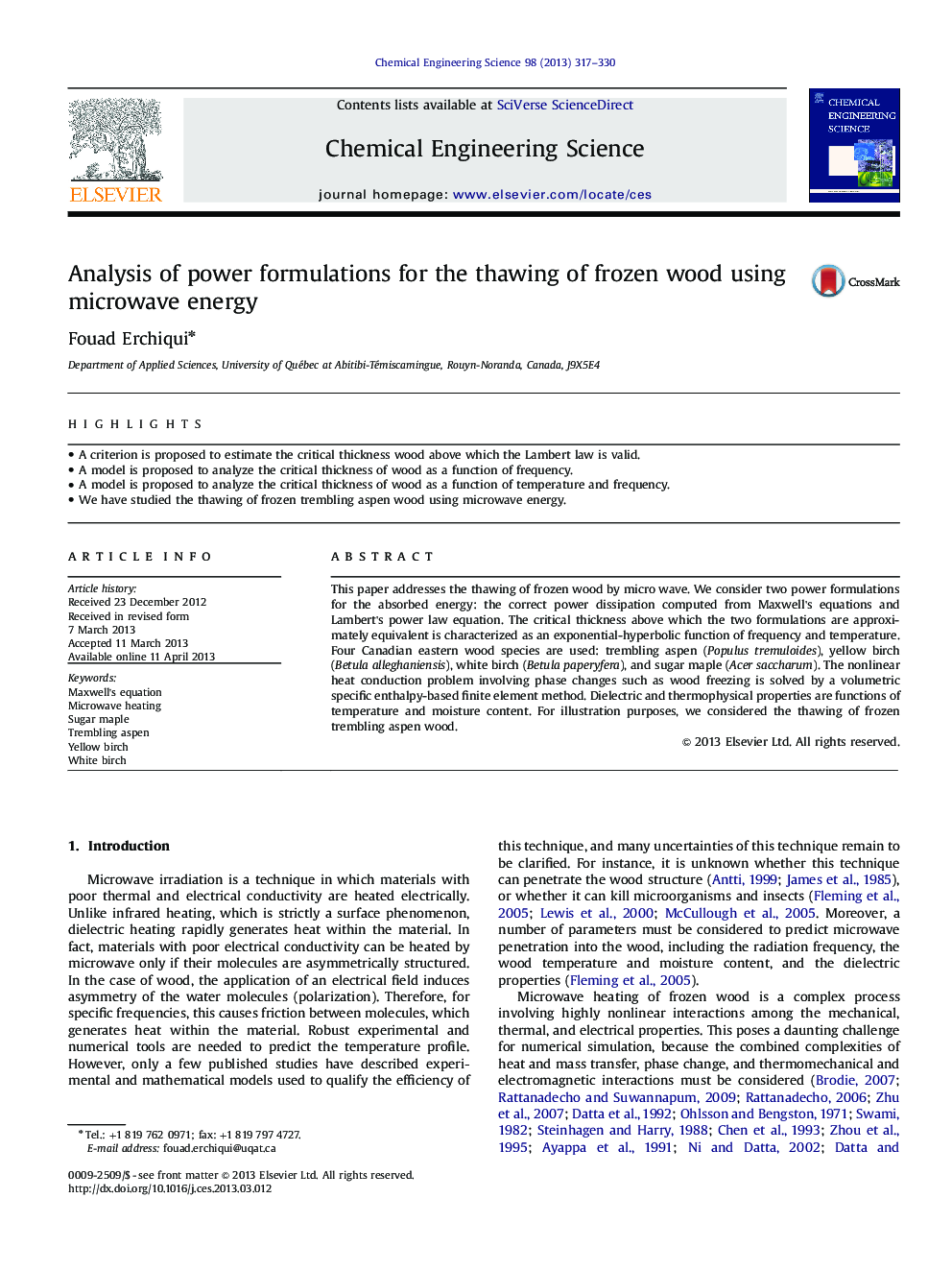| Article ID | Journal | Published Year | Pages | File Type |
|---|---|---|---|---|
| 155131 | Chemical Engineering Science | 2013 | 14 Pages |
•A criterion is proposed to estimate the critical thickness wood above which the Lambert law is valid.•A model is proposed to analyze the critical thickness of wood as a function of frequency.•A model is proposed to analyze the critical thickness of wood as a function of temperature and frequency.•We have studied the thawing of frozen trembling aspen wood using microwave energy.
This paper addresses the thawing of frozen wood by micro wave. We consider two power formulations for the absorbed energy: the correct power dissipation computed from Maxwell's equations and Lambert's power law equation. The critical thickness above which the two formulations are approximately equivalent is characterized as an exponential-hyperbolic function of frequency and temperature. Four Canadian eastern wood species are used: trembling aspen (Populus tremuloides), yellow birch (Betula alleghaniensis), white birch (Betula paperyfera), and sugar maple (Acer saccharum). The nonlinear heat conduction problem involving phase changes such as wood freezing is solved by a volumetric specific enthalpy-based finite element method. Dielectric and thermophysical properties are functions of temperature and moisture content. For illustration purposes, we considered the thawing of frozen trembling aspen wood.
